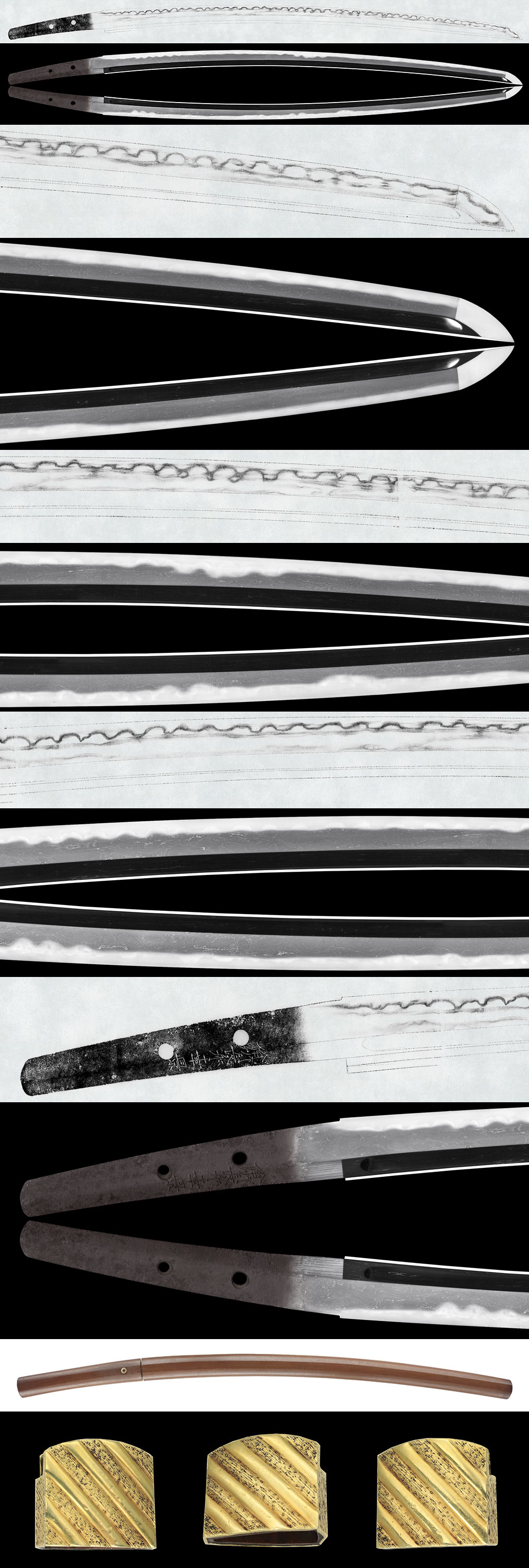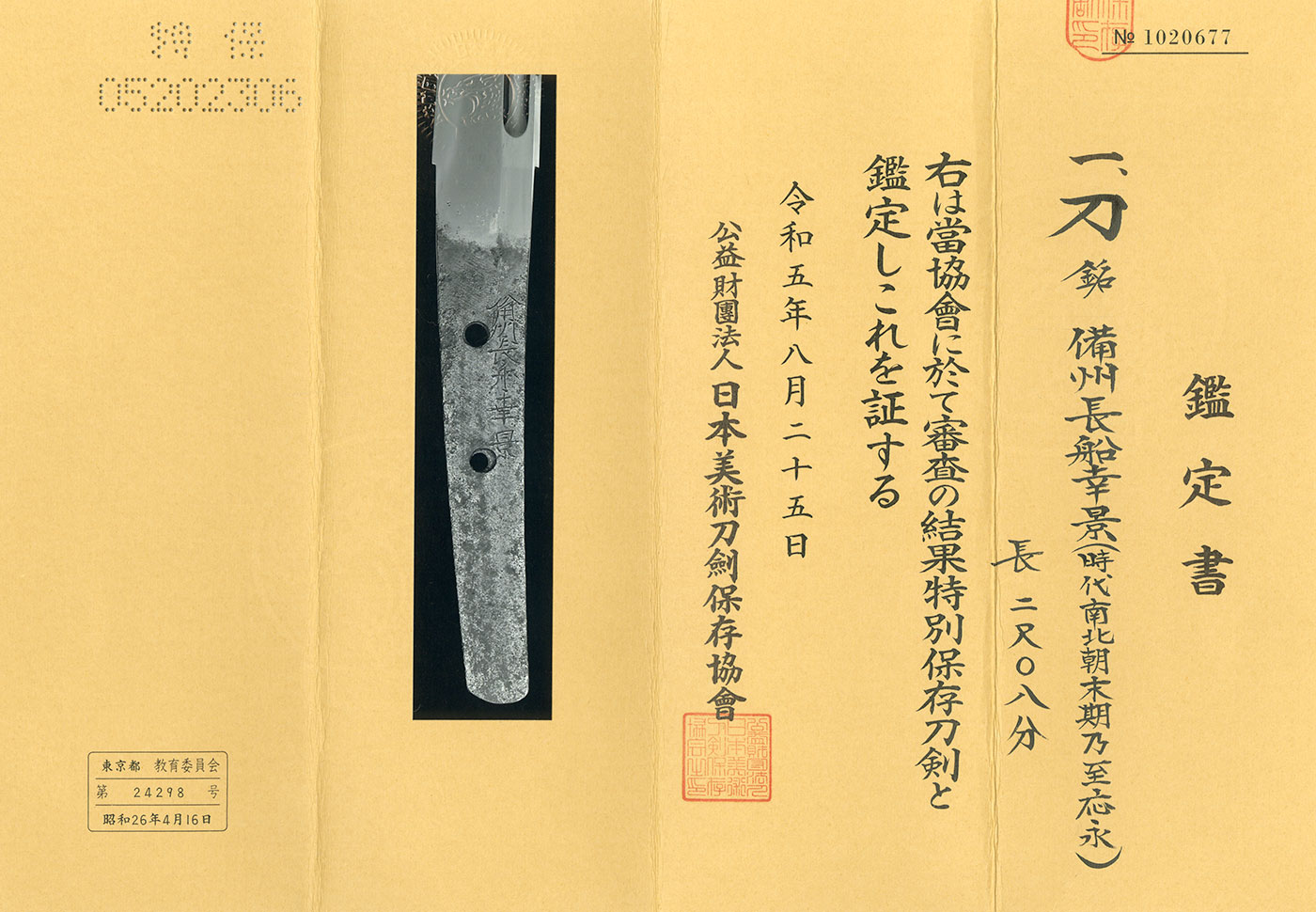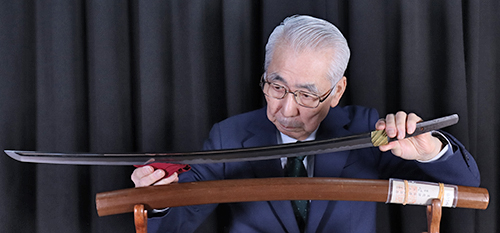Ordering number:23839
Katana in Shirasaya(NBTHK Tokubetsu Hozon Token)
Signature: Bishu Osafune Yukikage
銘: 備州長船幸景
Aoi Art estimation paper: NBTHK Tokubetsu Hozon Token
(We divide 4 sections for each sword as Saijyo Saku, Jyojyo Saku, Jyo Saku, and Regular
Saku) This piece is ranked as Jyo Jyo Saku.
Polished by high raked polisher.
Habaki: Gold foiled single habaki
Blade Length: 63.03 cm (24.81 in)
Curvature: 1.82 cm (0.72 in)
Mekugi Hole: 2
Width at Base: 2.81 cm (1.11 in)
Width at the end: 1.81 cm (0.71 in)
Thickness of rim (Kasane): 0.62 cm (0.24 in)
Sword Weight: 510 grams
Era: Muromachi period, from the Oei era to the Choroku era.
Shape: Slightly small sword with thick kasane and slightly extended kissaki, with bo-hi carved on both sides, suggesting it was made for one-handed use.
Jigane: Fine itame hada, soft and well-laid, with reflections clearly appearing in a rod-like pattern.
Hamon: Gunome midare with large areas, showing the influence of the Omiya school, with disordered boshi and good workmanship.
Features: Yukikage was a swordsmith from Bizen, with the first generation in the Karyaku era (late Kamakura period), the second generation around the Oei era, and the third generation around the Choroku era. The hamon is similar to that of Omiya Sukemune. This piece is from the late Nanbokucho period to the Oei era.
Aoi Art’s Comment: Observing the shape of Bishu Osafune Yukikage, the nakago is short, the curvature is deep, and the kissaki is slightly extended, with a disturbed hamon. This suggests it was made for one-handed use, reflecting the transition from mounted to ground warfare. The ease of wielding it against an enemy and its suitability for group combat suggest it was designed for ease of battle.
NBTHK Tokubetsu Hozon Token
Aoi Art estimartion paper
Whole Oshigata





